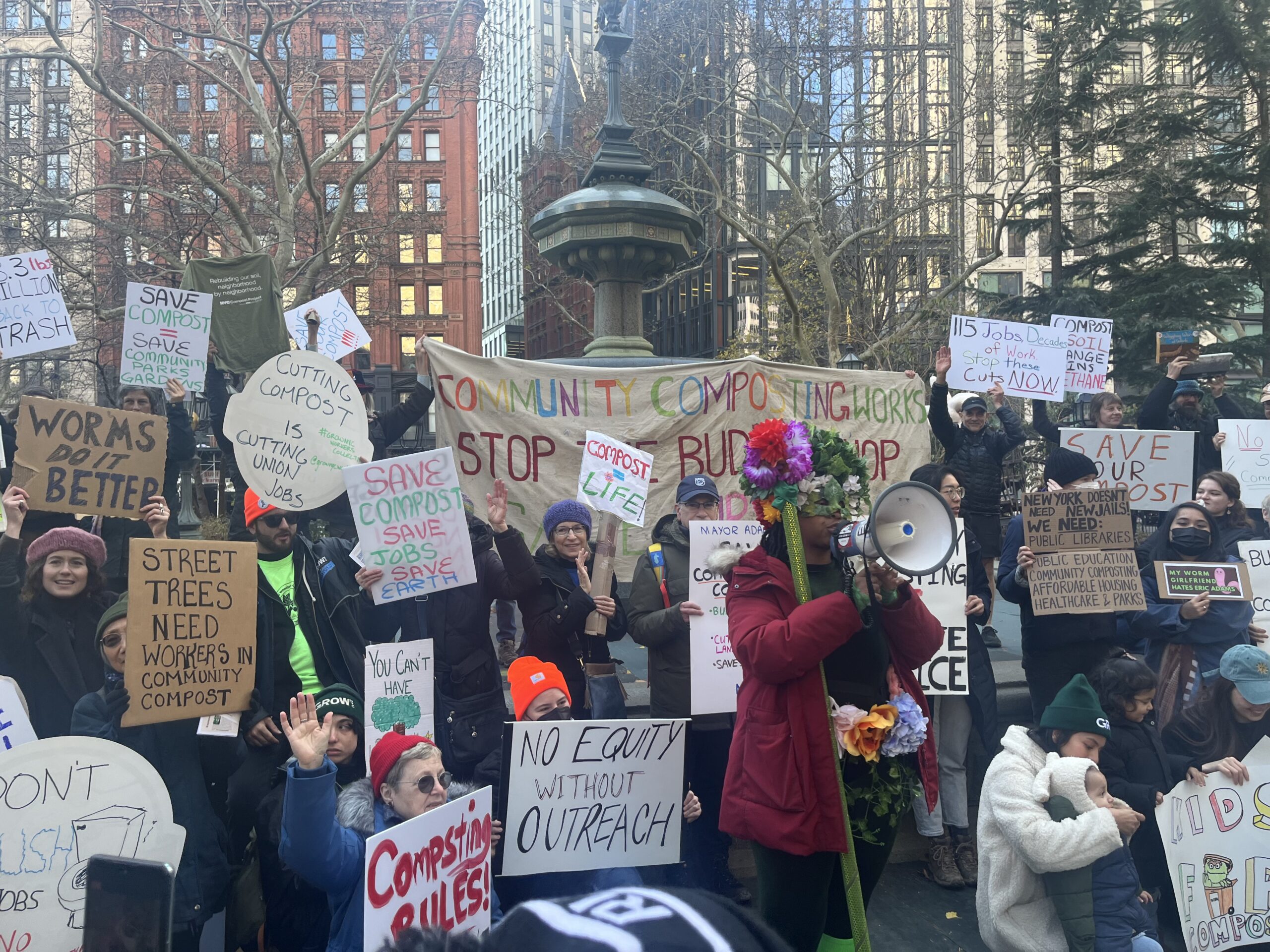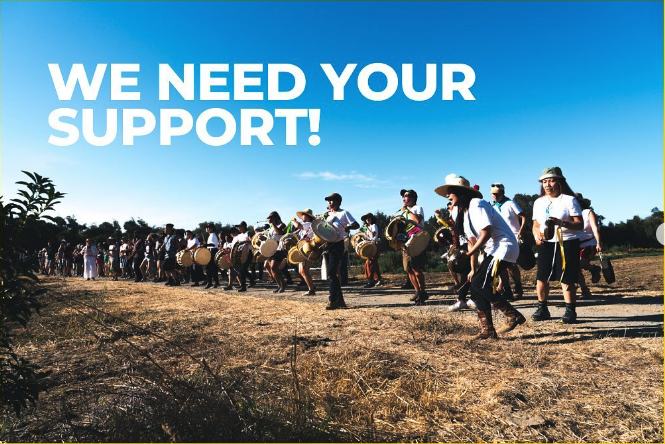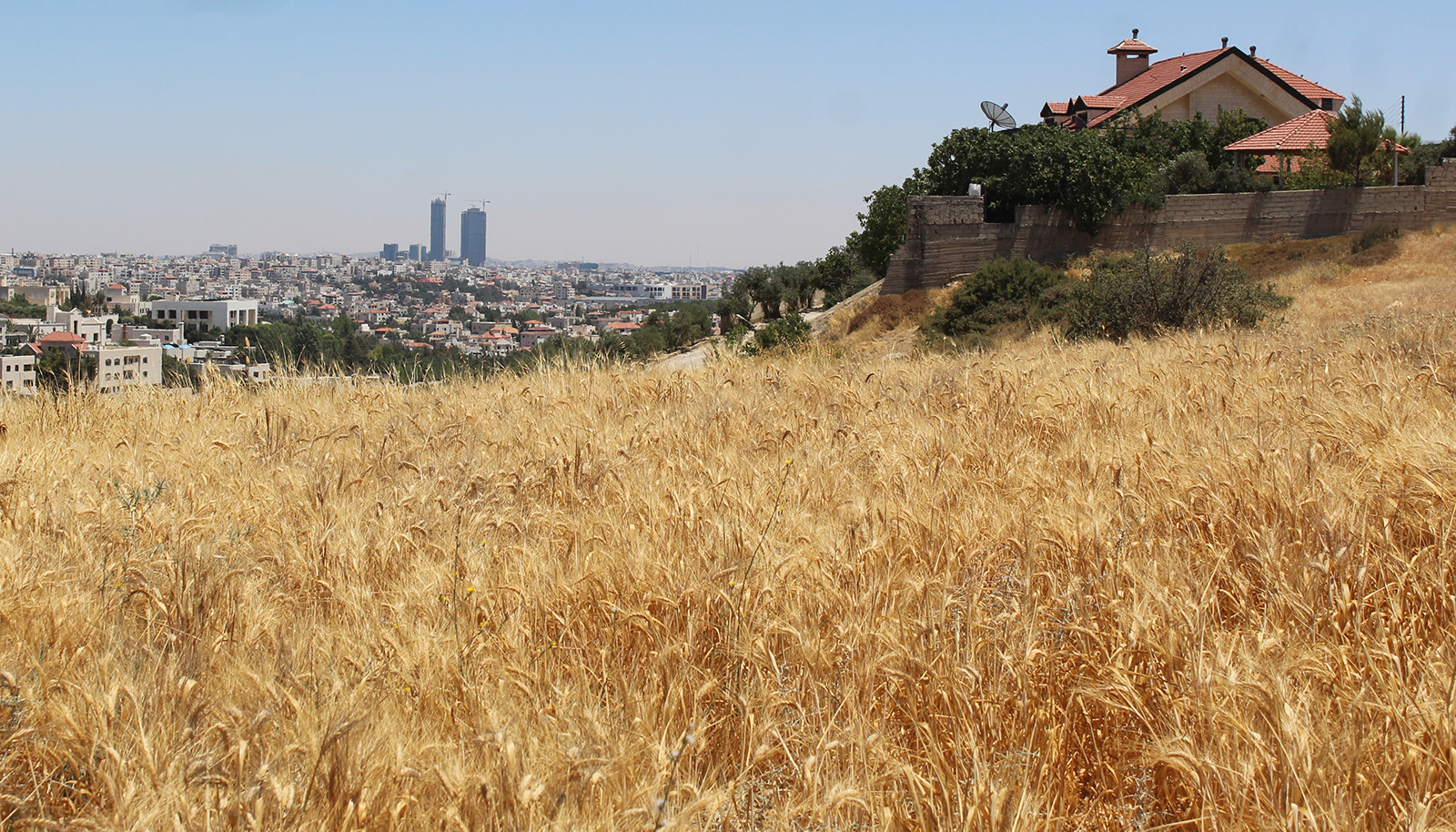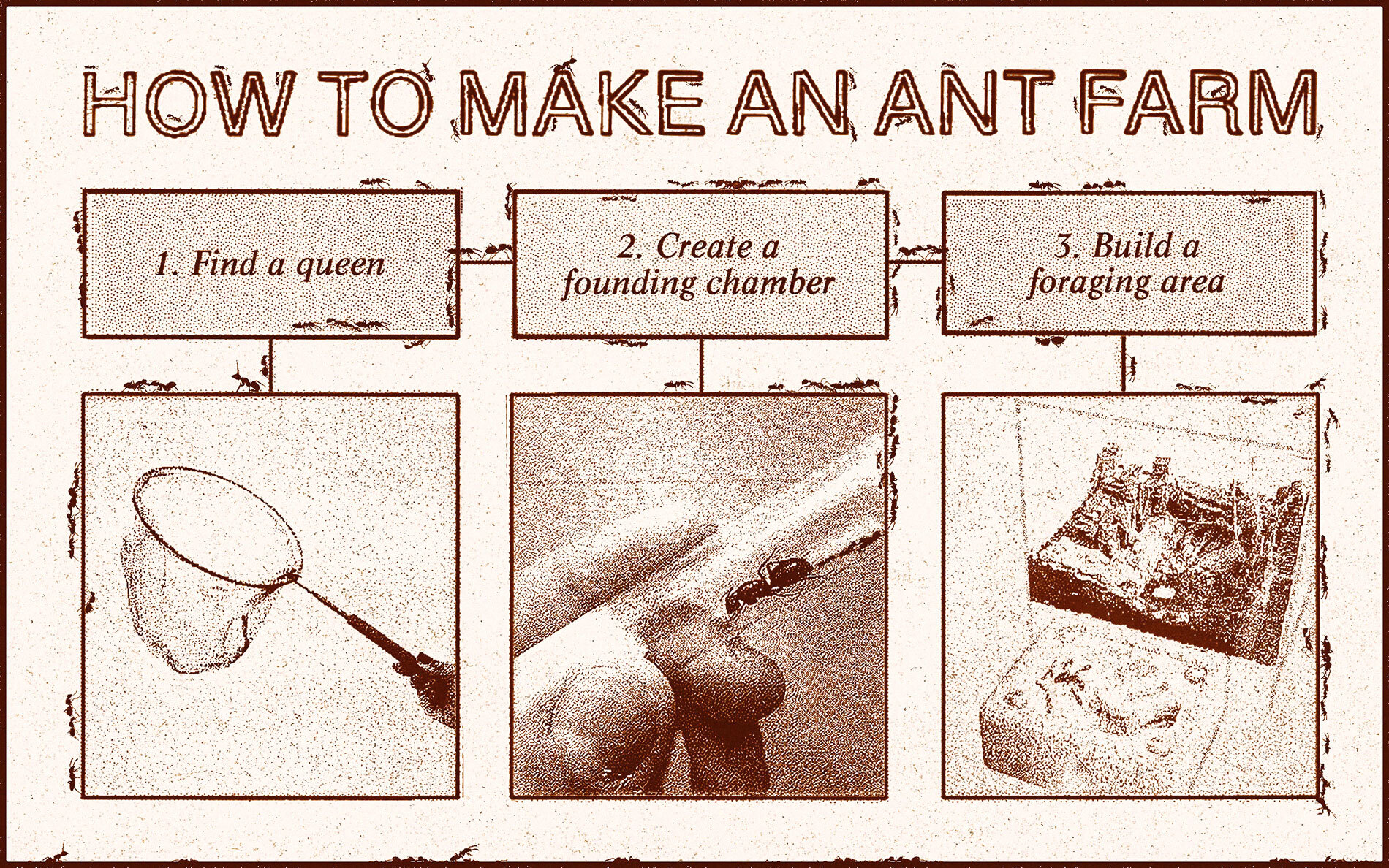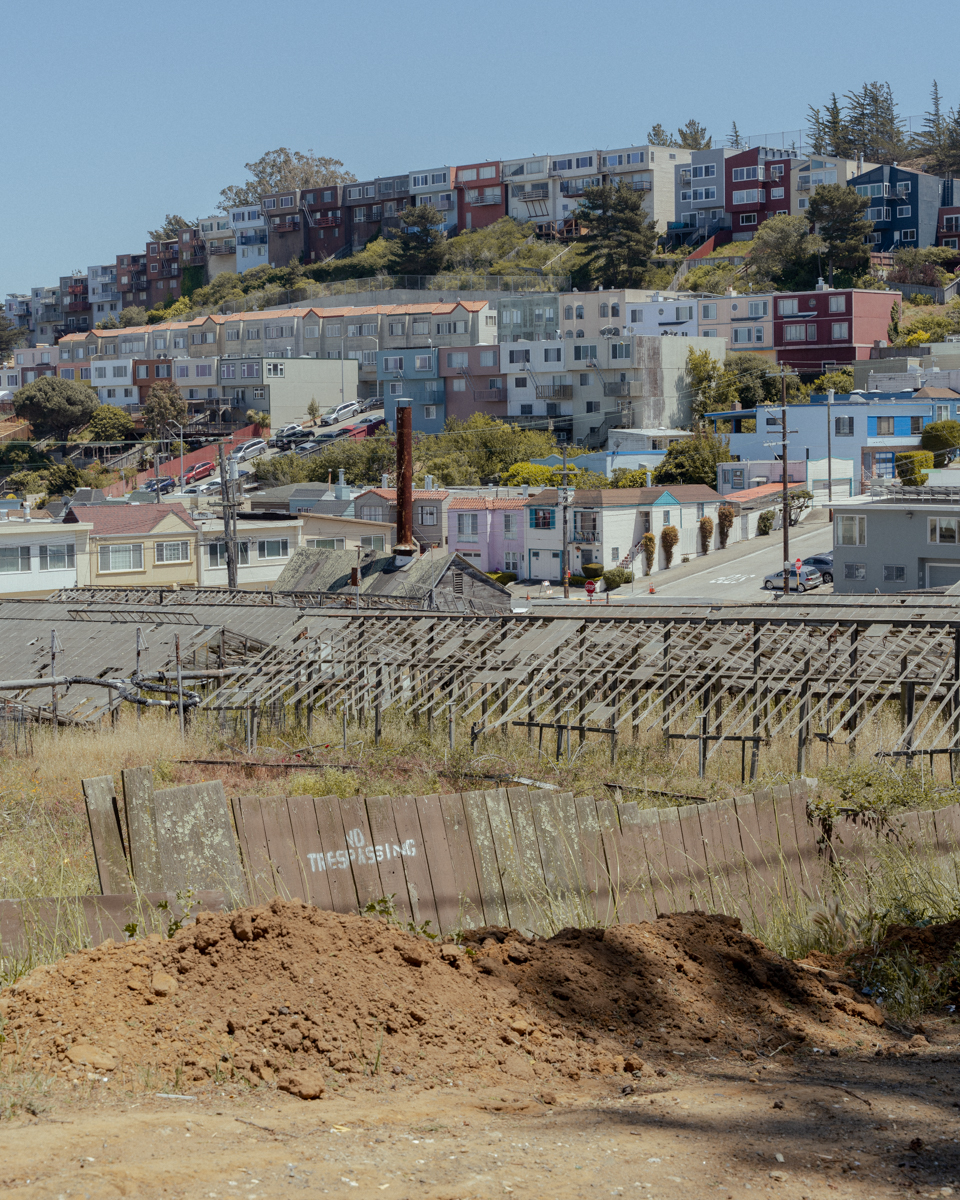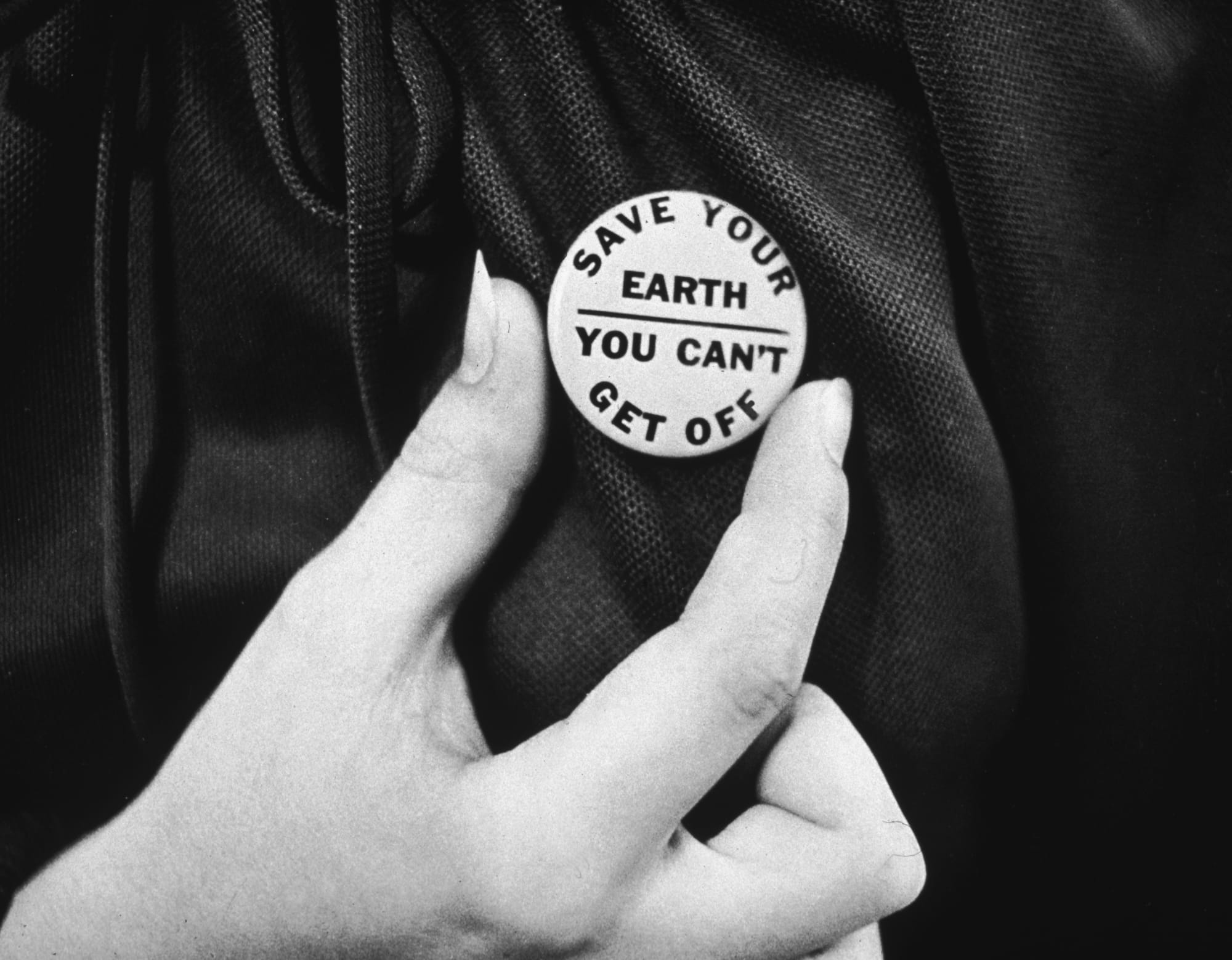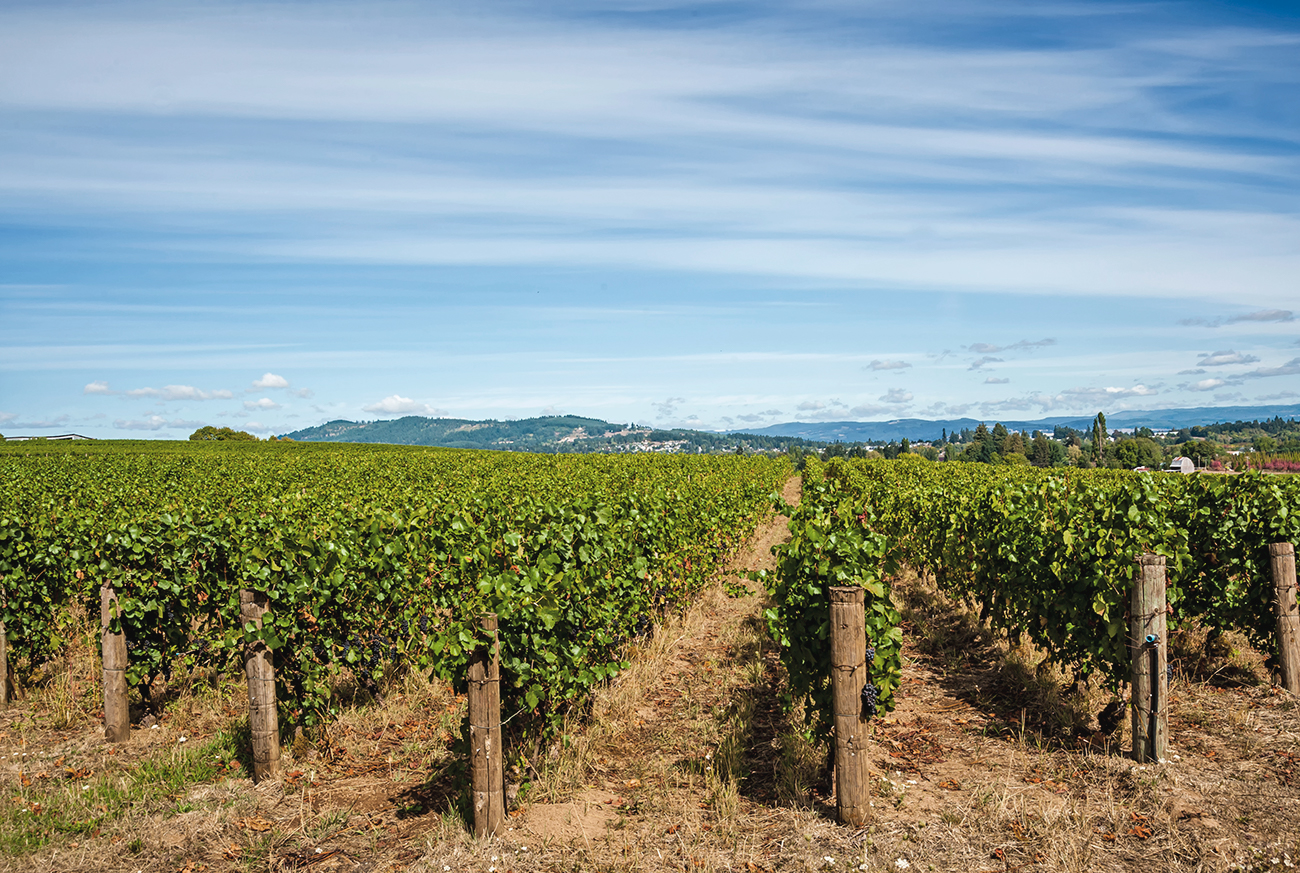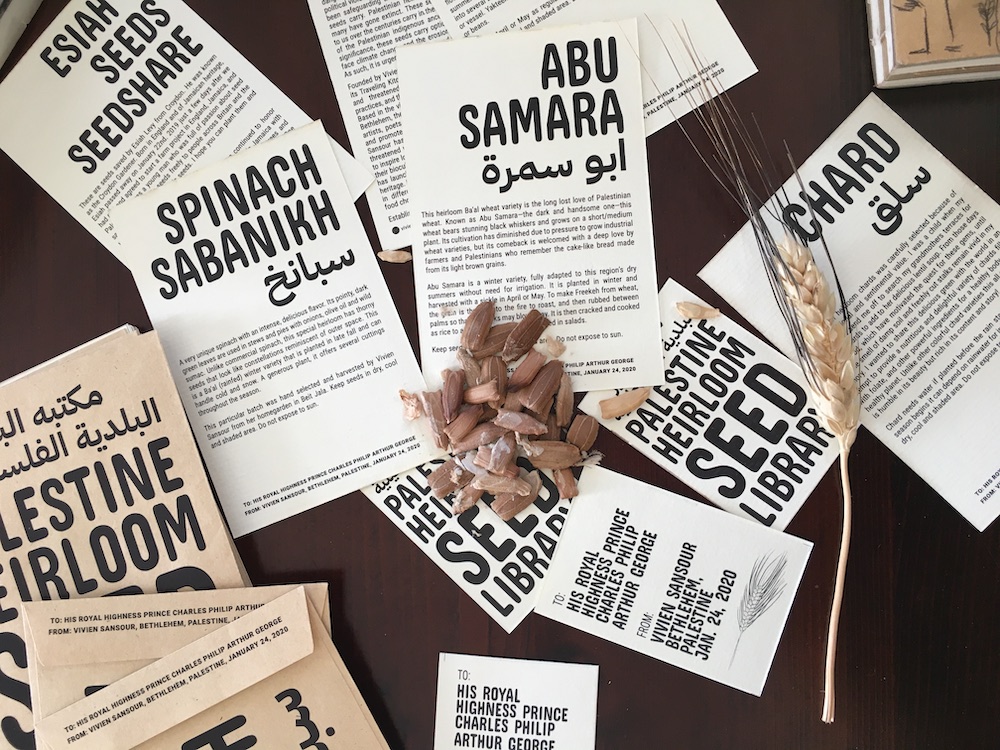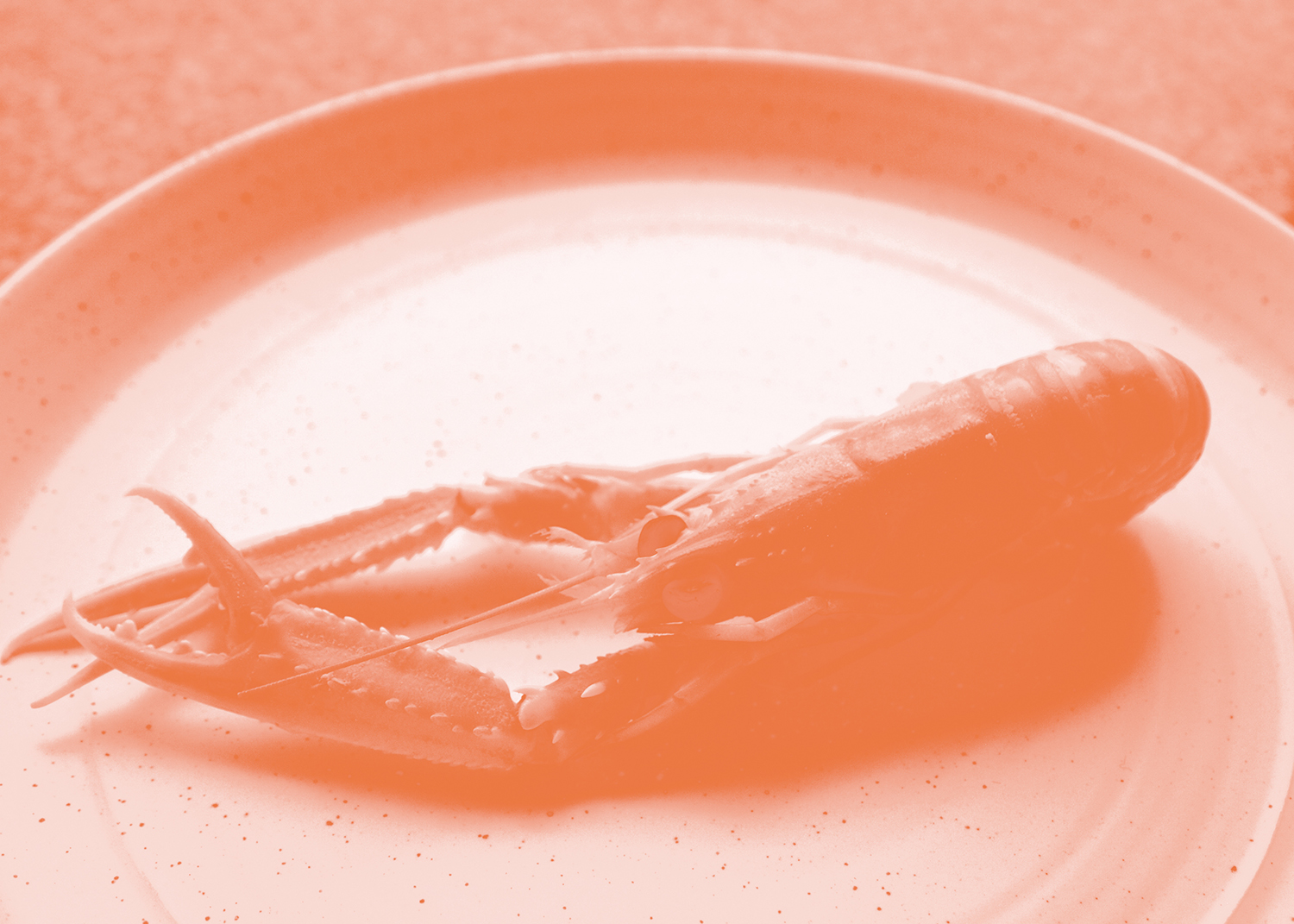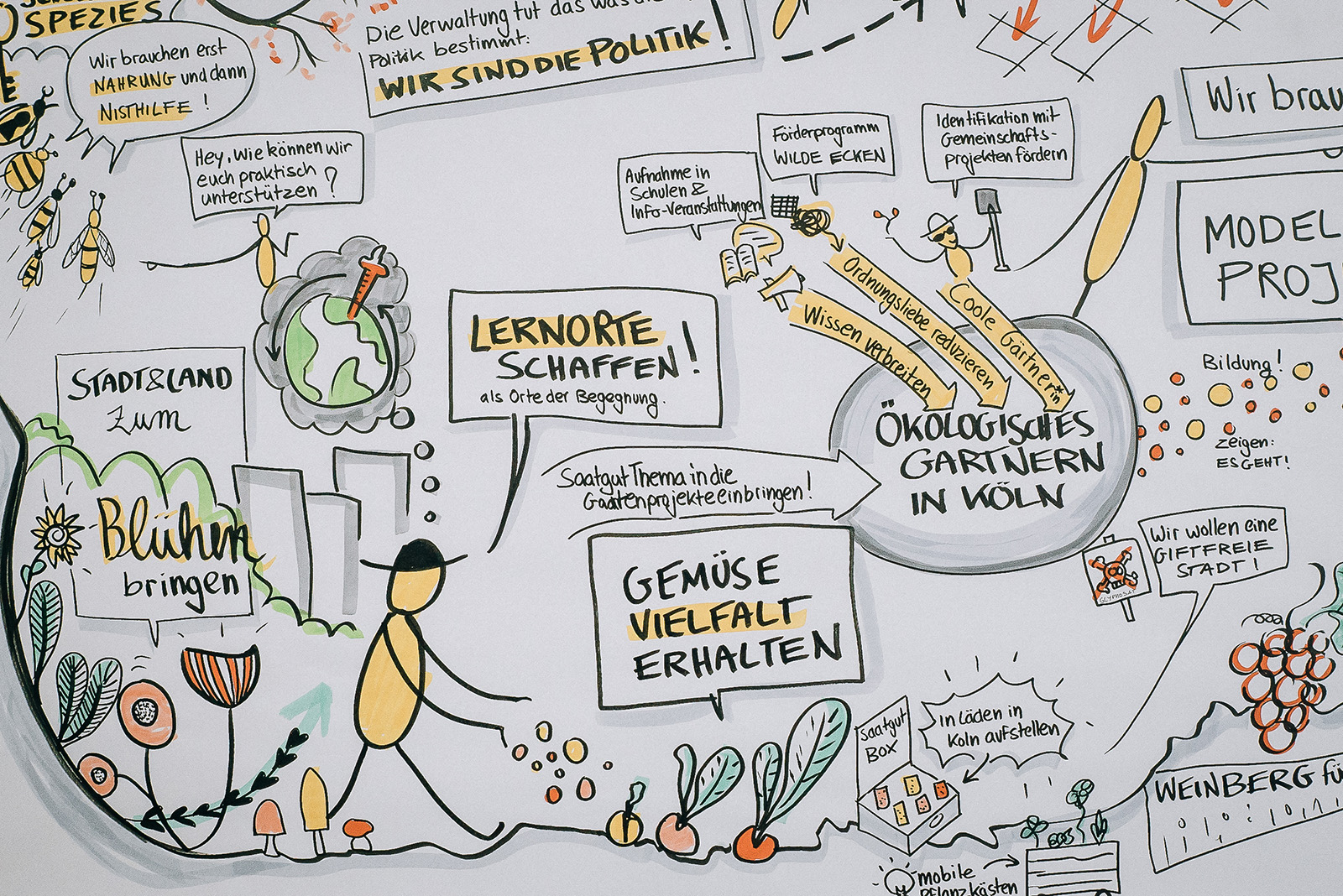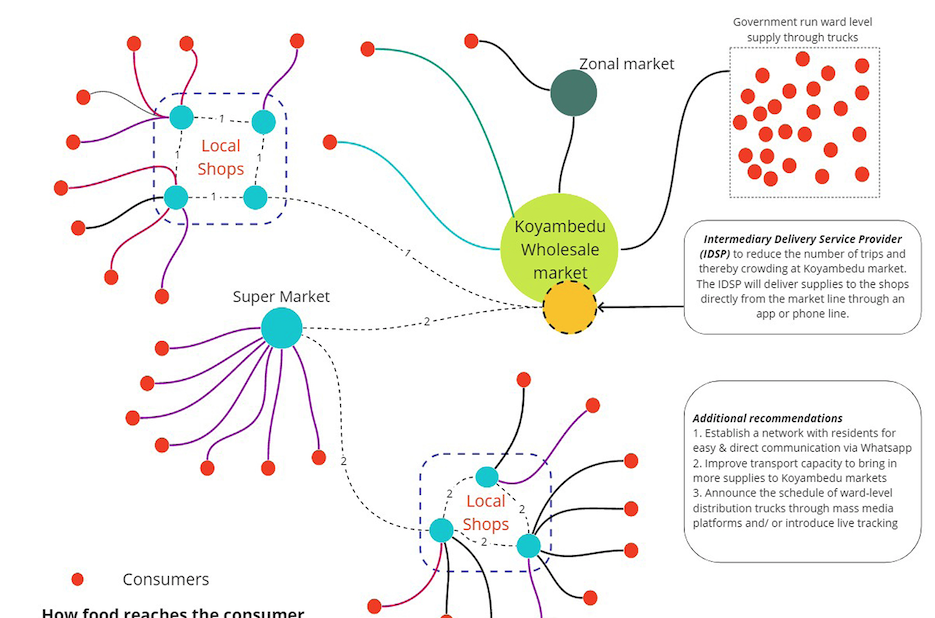How does biodesign intersect with food, agriculture and edible ecology? Josh Evans is a PhD student at Oxford and former lead researcher at famed restaurant noma’s research institute, the Nordic Food Lab, in Copenhagen. He’s previously researched eating insects (see the documentary film Bugs, or the book On Eating Insects, published by Phaidon), and is currently researching what happens to microbes when we mix them in new ways in new places for new flavors. Chido Govera is a Zimbabwean social entrepreneur, farmer, campaigner, educator and founder of The Future of Hope Foundation. In her work she reaches out through food to women and girls across Africa and beyond, enabling them to provide for their primary needs as the first and most important step to engage them in socio-economic development and to reach their full potential. From growing oyster mushrooms to harvesting termites, grilling weeds, seasoning sadza, and distilling mazhanje fruits, Josh and Chido discuss the connections between flavor, edibility, diversity, eco-culinary knowledge, and how “denaturalising” and “decolonising” edibility can point us towards more desirable food futures.
This conversation was originally published in “Other Biological Futures,” Issue 4 of the Journal of Design and Science, edited by Natsai Chieza and Daisy Alexandra Ginsberg. Read the entire issue here.
Josh Evans: So, Chido, let’s talk mushrooms—but before we do, let’s first talk about The Future of Hope. What is it, and where did it come from?
Chido Govera: The Future of Hope is an organisation that I founded in 2013 with the purpose of working to empower women through food. In my own life, growing up in a village as a young girl and having to be responsible for bringing food to the table, I realised that it will do women a lot of good if we can teach them to take care of their own food needs, because food not only helps women to make sure their families are fed—and in many African societies this is still the woman’s responsibility—but it also gives them some security in their own home.
I grew up as an orphan in a village in Zimbabwe. I was living with my mother’s side of the family, where, culturally, I don’t belong. So, this was a home that was not really mine and in that situation, if I stood up for myself, the response would be, “Well, I will send you away to go and find your real home, and your real home is your father’s home.”
But when I was able to secure food, I became an asset to my mother’s family. To chase away someone who was bringing food into the homestead was out of the question. The threat of being sent away was completely eliminated by the fact that I was able to earn my own keep. Producing my own food was also making my own power. That also allowed me to stand up to different kinds of abuses, including this constant threat of being sent away. It became very apparent to me that food plays a very important role not only in women’s lives but in the community in general.
The name “The Future of Hope” comes from my story up until the point I began writing it at the age of 19. I named the “book” after a conference called The Future of Hope that [sustainability entrepreneur and activist] Gunter Pauli, now my adopted father, had organised in Hiroshima [in 1995], together with then-President Vaclav of the Czech Republic, [political activist] Elie Wiesel and others. Its main focus was calling upon the younger generation to step up and fill the leadership gaps of our time. My father showed the manuscript to Elie Wiesel, who suggested “The Future of Hope.” I thought it was perfect.
By then, I was 23 years old, and my life was completely different from when I was 19. So rather than starting to write again about what ‘the future of hope’ meant to me then, I decided to put my future of hope into practice. That’s how the Foundation was created: I wanted to show what I understand by the phrase and how I want hope to grow in my community, how I want hope to manifest itself in my country. I started it as a way of showing what is possible, as a way of me stepping out of a victim role and becoming a facilitator, and to try to cultivate that attitude in different communities around my country. The idea is to build something that works in Zimbabwe, that we can also take outside Zimbabwe and spread across the African continent and beyond.
Josh: Where do mushrooms come into the story?
Chido: I learned to farm mushrooms when I was 11 years old. I had tended a farm that belonged to my grandmother, and I only grew what a seven-year-old can grow. At the end of every farming season, the main abundance I had was straw, corn stalks, millet stalks; that was not food. It was just waste. Before I learned to farm mushrooms, I had thought they grew only during the rainy season. But then I realised they could grow year-round, and that this agricultural waste could be converted into food, and not just any simple food but valuable food. One of the very moving things for me was that from the mushroom cells I could not only produce food for myself, but also produce enough to sell and earn my own money.
 Yellow and gray oyster mushrooms from The Future of Hope foundation ready for market. Image courtesy of The Future of Hope.
Yellow and gray oyster mushrooms from The Future of Hope foundation ready for market. Image courtesy of The Future of Hope.
At that point, I hadn’t imagined that I would earn my own money in a dignified way without overworking myself. Even better was that after earning my own money, I was able to help send other orphans to school. I had wished for that since I was eight years old. I had told myself, “If I survive this, I want to make sure that I help other young girls, so they never have to go through what I went through.” Realizing that with mushrooms I could feed myself, I could make money, and I could help others, was very powerful for me. Mushrooms became a centerpiece for my work: they can convert an abundance of agricultural waste on a small piece of land—a common factor in many subsistence communities—into food and livelihood, which provides a big opportunity for women and girls.
 Community women from Kwekwe with their harvest. Image courtesy of The Future of Hope.
Community women from Kwekwe with their harvest. Image courtesy of The Future of Hope.
I created The Future of Hope officially in 2013. We started teaching groups of women from around Zimbabwe to grow mushrooms. We’ve taught close to 1,000 women and together we have around forty mushroom houses. Just yesterday I discovered two new ones! Our model is that we find interested people through local schools, churches, and leaders, and we bring together a group of seven people from each community: five young girls and two women—adults who work with orphans, or old people, or widows. The women act as mentors for the young girls, and because they are respected in the community, they can help negotiate certain things that the girls would not be able to negotiate on their own. These seven people then come to me here in Christon Bank, outside Harare, for training. They stay for two weeks to learn, and afterwards, we send them back to their communities with the basic materials: mushroom seed, substrates, plastic bags, everything they need to start their own production. When funds are permitting, we also build a mushroom house for them.
We’ve been doing that since 2013, and from 2015, we’ve been exploring the idea of really bringing things to the market, because it’s not enough to just teach them to produce and eat for themselves. To bring lasting, sustainable change, we need to build the market so that the produce is not just for their own consumption, but for the community too. That’s why we have the charitable and profitable approaches together—in contrast to current aid schemes, for example, which I think are often a poverty reproducing machine. This combination of charitable and profitable allows these groups to thrive beyond just eating mushrooms, because of course we know that humans cannot live on mushrooms alone.
 Community women attending The Future of Hope training session in Christon Bank. Image courtesy of The Future of Hope.Josh: And what is the context around growing and eating mushrooms in Zimbabwe? Is there an existing culture around eating wild mushrooms, and how does that interact with your efforts to build a culture around growing and eating cultivated ones?
Community women attending The Future of Hope training session in Christon Bank. Image courtesy of The Future of Hope.Josh: And what is the context around growing and eating mushrooms in Zimbabwe? Is there an existing culture around eating wild mushrooms, and how does that interact with your efforts to build a culture around growing and eating cultivated ones?
Chido: Mushrooms have been part of our diet since the very beginning when we were hunters and gatherers. But these things, like everything, have been changing in the name of civilisation. Colonialism constrained what was considered good to eat, to the extent that the native edibles were disregarded and considered primitive. And with the emergence of social media, our young people are bombarded by popular trends that further enforce the detachment from these traditions. An example is how people started to consider eating ishwa (flying ants) as something uncivilised, a food for poor and uneducated people who eat it because they don’t have any choice. As people start regarding themselves as educated and rich, they become keen to detach themselves and completely disregard foods that are otherwise a cultural delicacy.
I grew up with my grandmother. When I knew her, she was already over 100 years old, and she could not see anymore. As a young girl I would walk her into the forest, she would sit under a tree, and tell me, “You go, bring the different mushrooms you can find; put each on their own,” and I’d run around collecting, and when I placed them in front of my grandmother, she would reach out to every one of the piles, break them and smell them, because she couldn’t see them clearly. But she could smell them, and she would tell me, “Yes this is an edible mushroom. You put it in this pile.” And to another, “This is a partially poisonous mushroom, but if we take it home, and cook it and dry it and eat it later, it’s not poisonous anymore.” And to another, “These ones are just inedible, not poisonous, we just don’t eat them, so don’t worry about them…even if you make a mistake and have a piece of that, it’s nothing. But this one is deadly. Please put it far, far away.” And this was a woman who could not see. She knew it so well because she’d done it long enough to know what the mushrooms were even without seeing them.
For me, this is a sign that we really have a strong history of foraged food, but “civilisation” came. All our young people wanted to disassociate themselves from wild food. I was teaching in Ghana once and I asked for the local name of mushrooms, and they said the word actually means “poor man’s food.” When I asked them what qualifies as “poor man’s food,” they said, “Everything you get in the wild, because you don’t have to pay money for it.” I know that here in Zimbabwe, deaths from mushrooms are actually increasing because people no longer know about which ones they can eat, and how to prepare them properly. Persuading people to eat and value my cultivated mushrooms is a whole other challenge, because I have to explain cultivated mushrooms as different from wild ones, but also different from an “artificial” food. I have had to show how they are both “natural” and “civilised.”
This is frustrating. We have been so obsessed with being civilised that we’ve really forgotten to appreciate the diversity of foods we have in our local environment. That’s why today we care less what is taken away from our environment, because we’re not paying as much attention as we used to. If we were eating from our forests more, they would not be as depleted as they are today, because we would depend on them for our livelihood.
Of course, to try to simply go back to the way it used to be in the past will not be appealing to everybody, or even possible—we need creative ways to bring us back to the things we used to have in abundance, that make sense today. Which is why I think what you’re doing is interesting because it creatively links us back to practices we have known but have left because we think we’re much better off now.
Josh: Absolutely. This sounds very similar to the idea at the heart of Nordic Food Lab in Copenhagen, where I worked for some years. The lab emerged out of the restaurant world as a place for chefs and scientists and other researchers to make open-source investigations into the edible potential of the Nordic region through flavour. This pursuit naturally led us to consider and reconsider all sorts of organisms: those that had perhaps been eaten in the region before but had been forgotten about, like wild plants; those eaten in other parts of the world but less so in that region, like algae; and those that were a mix of both, like insects or different kinds of fermentation. What began as a pursuit of new flavours (and we can debate what “new” means here) quickly also became about a pursuit of diversity, of both organisms and the knowledge and practices that go along with them that transform things from raw materials into food.
 Experiments at Nordic Food Lab. Image by Claes Bech-Poulsen.
Experiments at Nordic Food Lab. Image by Claes Bech-Poulsen.
This work reminds me of your story about picking mushrooms and learning how to identify them from your grandmother. The mushrooms became edible not just as a function of whether they had certain toxins in them or not—and toxicity itself is of course also a function of dosage—but as a result of your grandmother knowing how to prepare them so that they were no longer toxic; similarly, just because a mushroom did not have toxins did not make it “edible”—it had to have good flavour or other useful properties to make it worth eating. This notion of edibility being not only or not even primarily a biological or natural property of an organism, but mainly a social or cultural one, came up again and again in our research, across all domains of life. We could call this idea “denaturalising edibility.”
We saw this idea in Kenya and Uganda where we were doing research on termites as food: different tribal groups had different taxonomies for organising the different kinds of termites in the area, as well as different understandings of which ones were good to eat and which were not, based on flavour, medical function, or otherwise. It was the same for the different mushrooms that grew out of or around the different termite mounds—some were highly prized, some were eaten only when prepared in a certain way, and some were simply not eaten at all, whether due to unalterable toxicity or simply because they were not seen to have much value. These understandings of what was good or bad to eat in turn affected how people interacted with and shaped their local ecologies—whether or not to displace a termite colony from a field, or to allow certain trees or termites associated with certain mushrooms to grow. And more broadly, we see contrasts between cultures that value eating certain insects and those that don’t in their approach to shaping those insects’ role in the ecology.
 Tom Lubeba and one of his prized termite mounds at his farm in Banda Kyandazza, Uganda. Image courtesy of Josh Evans.
Tom Lubeba and one of his prized termite mounds at his farm in Banda Kyandazza, Uganda. Image courtesy of Josh Evans.
These examples show that how we divide up the world into edible and inedible has profound implications, for humans and non-human alike. This realisation might encourage us to change our understanding of edibility in certain situations—like trying to build a culture around eating cultivated varieties of mushrooms that may not traditionally be eaten in Zimbabwe, or exploring ways to make honeybee drone brood [male eggs, larvae, and pupae], a common byproduct of beekeeping in Denmark, palatable to people in that cultural context.
These connections between flavour, edibility, cultural knowledge, diversity, and the resilience that manifests in a diverse ecology seem to form a recurring pattern for both of us. When it comes to trying to change what is considered edible or good to eat, as you’ve said, it’s not about maintaining that “This is the way we used to do it. Let’s just go back to that,” nor saying “Traditions don’t matter, let’s just find the best option,” whatever “best” might mean for a given group in a given time and place—but perhaps more about saying, “Okay, here are some other ways in which we can interact with the natural world through flavour. How can we use these as starting points to open up new spaces today where we can make better use of the edible diversity we have all around us all the time, but might have forgotten about, or failed to recognise, or become no longer able to see as edible or delicious or worth paying attention to?” That’s where I think some of the most exciting things are happening in how we can change our relationships with the natural world.
Chido: Yes, I think that’s right! This idea is what has pushed me more recently to explore the potential of other foods beyond mushrooms. Thanks to knowing the people from MAD [a non-profit organisation in Copenhagen working to improve the restaurant industry], we were able to reach out to them and use the support from the MAD network to really work towards valorising and profiting from all these activities.
I was also very interested in the possibilities that could arise from involving these women from the village. I am a typical village girl, and I was curious to see what could be the result of getting them to sit at the same table with these guys from a fancy, fancy place where everything is just… it’s out of reach for these women. I was tired of hearing young people say they couldn’t do this or that. Because even today, people ask me, “What do you do?” And I say, “I’m a farmer.” “Oh, please, Chido.” And I’m like, “Yes, I am a farmer.” And you know, people think “Hmm, farming is…it’s not something for us. It’s for someone else. You have to be very old and…” There’s a certain image associated with farming, which young women nicely dressed and wearing makeup are not part of. In the very first days going to market, I would arrive there over-excited, talking about how I have the best mushrooms in the world, and everybody would look at me and think, “What’s all that excitement about?” They would think, “We’re normal farmers. Be normal if you think you’re a farmer.” I wanted to challenge that mentality that farming couldn’t be extraordinary, couldn’t be a way to change our own circumstances and our society. So, I reached out to René Redzepi [chef-patron of noma, and founder of Nordic Food Lab and MAD], and his team came, and we organised a meeting with the women.
Josh: What happened at that meeting?
Chido: We did a number of things. There was a lot of cooking. The MAD team showed us some other fermentations we could do in the mushroom house. While the mushrooms are growing, there are other things we can make in the same conditions to enrich the foods we already have. One of the most exciting things we made together was a miso paste, which we mixed into sadza, our corn-based staple. Normally we just cook sadza with maize flour and water, and there’s nothing added to it. Some households add a bit of salt and butter, but the typical way is plain with water. And then we added this miso to the sadza. The women saw the whole process of preparing the miso paste, the ingredients and equipment, which, like the mushroom house, they already have, and how to use it. And it was very delicious, they loved it. It was an amazing, amazing experience.
 Fermentation workshop inside Chido’s mushroom house with the MAD team, 2015.
Fermentation workshop inside Chido’s mushroom house with the MAD team, 2015.

 Chido’s Mushroom House in Christon Bank.
Chido’s Mushroom House in Christon Bank.
 Inside Chido’s mushroom house. All images courtesy of Chido Govera.
Inside Chido’s mushroom house. All images courtesy of Chido Govera.
The MAD team also showed us how we could cook different kinds of vegetables and weeds in the garden on the barbecue. When people in Zimbabwe think of a barbecue, they think of a piece of meat, and that’s now far, far away for some people because they can’t afford it. But barbecuing these plants—even some weeds we do not usually eat, raw or cooked—made them so tasty. It was the same with fermenting some plants that we usually only eat fresh or boiled. What was particularly exciting for me was that five of the children I take care of in my home, during and after our time with the MAD people, said “I want to be a chef.” They saw how food can be so exciting, how it can be a creative process, a new way of connecting with the world around them, not just: “‘Okay, I have to eat, so I will cook in the same way just to fill my stomach.”
We need to do more of these things because we’re living in an age where most of our farmers grow food but without even an association of what it becomes in the end. This is the common story of cacao farmers who don’t really know the taste of good chocolate, or coffee farmers who don’t really know good coffee. I want to change that. I saw how powerful bringing together farming and cooking can be.
Josh: We’ve been talking about how we take for granted certain foods and flavours that we might have grown up with and are surrounded by, and how expanding the flavours we use can also have certain environmental implications—did anything like that happen at that meeting?
Chido: Yes, many things. Outsiders can help to remind us what an abundance we have, even if in the past that has also led to us distancing ourselves from that abundance in the name of civilisation. One example is the mazhanje. This is a nutritious fruit that grows wild, in season from around October until December or January. The trees grow in the forest, so you can pick whatever you want, whenever you want, but people think, “This is not so cool.”
At the meeting, we took some of these wild fruits—mazhanje, and hacha, and matamba—and we made different drinks with them. In my home, we still have a kombucha scoby from that workshop that we use to make our own kombucha. Knowing how to do something delicious with the fruits has changed how my girls think about them. Today when they see hacha or mazhanje on their way to or from school, they’re thinking, “Yes, I could eat them fresh, but if I bring them home to auntie, we can make a drink.” In the beginning, of course, it was just me making the drink, but today they do it themselves and they know how to harvest and clean everything up and redo the whole thing. And they do the same with other foods in different seasons—like when the mopane worms and other insects come, they check the trees where they live every day to see how many there are, and whether they can harvest some and bring them home. I see it changing not just how they see the worms, or the fruits, but how they understand and connect with the world around them—the fruit trees become special, the worm trees become special, the garden and the land become things to know and care about. And they talk about it with their friends.
 Mopane caterpillars harvested behind Chido Govera’s house. Image courtesy of Chido Govera.
Mopane caterpillars harvested behind Chido Govera’s house. Image courtesy of Chido Govera.
 Dried mopane worms at a workshop with the MAD team, 2015. Image courtesy of Chido Govera.
Dried mopane worms at a workshop with the MAD team, 2015. Image courtesy of Chido Govera.
What was really exciting was when we were able to share the mazhanje and other fruits with the MAD guys, because for the women, to watch these guys getting excited about mazhanje was a bit like, “What?” When the women realised that the mazhanje had real value, they started to talk about how there were not as many mazhanje trees in the forest as there used to be, and that maybe they should change that. It was a moment where you think, “Oh, so it’s not just what we get from them that is meaningful—we can actually offer them something meaningful too.” That really changed the whole interaction: the women realised that there is merit in showcasing what they know, and that their knowledge is valuable. It’s not a one-way street—they bring knowledge to the table, and they learn something. It’s an exchange—a different way of understanding colonialism and a different kind of future to make together.
Our visitors’ excitement about mazhanje is now emerging into a new idea where, at the end of this year, Lars and Mark from MAD [now co-founders of Empirical Spirits in Copenhagen] will come to Zimbabwe to explore these fruits further and work on making a mazhanje spirit with us. This will be done with the same women from the community, who are excited and proud to be involved. It’s a matter of being creative around what we have, which can create value for the local community by making a new product to share with others elsewhere in the world. Members of the local community will be able to harvest and sell the mazhanje at a better value than they normally would in the local market. They also engage in the processing of the fruit, which gives them extra income in addition to that from the fruit itself. Our hope is that this engagement will see the women and the community overall taking better care of the mazhanje trees and the forests where they grow. The initiative will comprise a replanting program in areas where the mazhanje tree has disappeared.
I strongly believe that these kinds of interactions are what we need to drive sustainable food in the future. It is also a powerful way to help people whose everyday life is a struggle to survive to understand environmental stewardship. It’s not something that we’re going to push through by just saying, “Oh, you know, climate change… our environment is depleted…” We need to use a language people can identify with. Like with the mazhanje—if we give it value through this spirit, people will not use the trees for firewood but will take care of them, and take care of the forests where they grow. Here is a concrete way to understand the connection between flavour and environmental stewardship. This new creative way of working with food and playing with edibility can help reach out to people in a way that means something to them. It is a good way to break down barriers between rich and poor, men and women, urban and rural, because it is real and right there, and everyone has a relationship with it.
Josh: Right. It seems that all the things we’ve been talking about—designing low-cost systems for mushroom cultivation from agricultural waste, or changing the edibility of certain mushrooms or insects or plants or fruits based on the techniques we use to prepare them, or cross-pollinating older knowledge of foods and flavours with newer knowledge about how to make new products with them, like with the mazhanje spirit you’ll be making with the Empirical guys—could indeed be seen as “biodesign.” But if that’s the case, these approaches to shaping and being shaped by non-human life are also much older than the concept of biodesign itself.
One response could be that the notion of biodesign is, therefore, a bit superfluous; but there might be something more interesting that happens when we recast these rather old practices and knowledges in this new light. It suddenly places much more clearly new interventions in food and agriculture, such as the commercial production of pure spore of your mushrooms, or using CRISPR gene editing in contemporary plant breeding, into a much longer history of humans and non-humans shaping each other, behaviourally and evolutionarily. It opens up space to have more nuanced conversations around the continuities and discontinuities in these histories, and what is at stake ethically and politically, for example, in claiming that gene editing is analogous to past domestication processes, or that shifting production of milk from cows to engineered yeast cells, as some Silicon Valley companies are proposing to do, is just the same as the way we’ve changed cows over thousands of years to produce milk to fulfil our needs.
When it comes to food, biodesign could also involve new ways of understanding and making edibility, and, as with your story of the mazhanje fruits, might also involve building systems of environmental stewardship through re-diversifying and re-valorising flavour—rather than a more straightforward apolitical, technocratic approach to design interventions, bio- or otherwise, that might see the trees but miss the forest.
Chido: Aha, so in that way, this understanding of biodesign can be related to the phrase you introduced earlier, “denaturalising edibility.” I was curious why you choose that phrase?
Josh: I suppose there are two parts to the idea. One is that we need to recognise that edibility is not something that is just already there in things, but has a lot to do with what we do with them, the kind of knowledge we have about them, and the culture in which we find them, as we’ve been discussing. The other is about changing edibility, whether intentionally, or what happens when different understandings of edibility—and their associated cultures—meet. Colonialism is a quintessential example here, where one understanding of what is good or possible or appropriate to eat dominates others, as you say “in the name of civilisation.”
The eco-cultural and health degradations this domination has led to are evident in many places around the world. So, we might call the second part—actively working to change or resuscitate or expand certain edibilities—”decolonising edibility,” which recognises that edibility is not only shaped by knowledge and practice and culture, but also by larger forces of some cultures denying or oppressing others. Given the range of ways in which human societies have developed different modes of sustenance in different ecologies around the world, we could probably say that it is not a good thing to try and make one mode or very few modes of sustenance work the same way for everyone everywhere—both because that isn’t really viable ecologically, as we’ve been learning, and also because when it comes to sovereignty and justice, it is a terrible idea.
As with some of the challenges you’ve been encountering in getting people in Zimbabwe to see wild or cultivated mushrooms again as good to eat, we found this same pattern recurring in the work we did with insects. We saw it in Kenya and Uganda, and in Australia, Mexico, and Peru—all places with colonial histories—and even in Japan, which may not have had a colonial history in the same way, but was certainly changed dramatically post-WWII with the Marshall Plan. In all these places, in the past, eating insects was much more common among those who are now grandparents and great-grandparents. And they would tell us that their grandparents ate certain insects that much more. So these traditions have, for the most part, been dwindling over time—likely as a result of both diminishing practice, as well as, in many cases, changes in agriculture and land use, from pesticides for example, resulting in fewer insects in the ecosystem.


 From top to bottom: Palm weevil larvae in Uganda, Bush coconut in Northern Territory, Australia, Escamoles with prickly pear pads and onion on a comal in Hildalgo, Mexico. Images courtesy of Josh Evans.
From top to bottom: Palm weevil larvae in Uganda, Bush coconut in Northern Territory, Australia, Escamoles with prickly pear pads and onion on a comal in Hildalgo, Mexico. Images courtesy of Josh Evans.
Chido: That makes sense. We could even say decolonising edibility can happen on two levels: the global and the local. Globally it is about taking apart colonialism and questioning current food trends, where locally it has to do with the rigidity of our own cultures—the “normal” practices we don’t even consider having to challenge. But we have to be just as prepared to confront our own culture as a coloniser of edibility and challenge the ways it no longer serves us. The maize we make our sadza with has done a lot of damage to the environment both as feedstock and food. Faced with increasing drought in this age of climate change, we have to reflect on accepted norms and consider drought-resistant alternatives like amaranth, which can also be used to make a sadza, and/or a shift away from eating it so predominantly.
But today the way that we think about addressing droughts and managing food shortages is limited to bringing in food aid and an inclination to develop a new maize seed that’s resistant to drought. Instead, we need to take a step back and consider changing the whole system to bring about something completely different, or a whole new way of eating in our land at this moment. It’s something I think about. We need to be able to ask ourselves: which of our old ways stand in the way of the future, in the way of evolution, and do not really give space for edibility to be what it is? Not natural, or static, but flexible: where it changes and we change with it and so on, back and forth.
Josh: Right—so it’s not just that edibility is something that varies across cultures, but it’s also something that varies over time too, and in some way, we’ve forgotten that. It’s not just something that will change, but also something we can actively change. Is that related to what you’re saying?
Chido: Yes, indeed nothing should stop us from thinking of colonisation—of edibility, and of other things—in this sense, where we say that some ways of the past have been imposed on this generation today. It could be by people from outside, but it could also be by us, our older generations. Knowledge from the past is important, but it cannot just take all the space for deciding what we do today, dismantling the creativity of this moment in the name of “traditional” culture.
Josh: I think that is a really good point. That’s the notion of “decolonising edibility”—and not just “denaturalising edibility,” which has more to do with recasting edibility as a constructed rather than a self-evident category. Meanwhile “decolonising” has to do with recognising the politics and power relations inherent in deciding which construction of “edibility” we use—I think this began to emerge for me in our fieldwork with the insects especially and has persisted since. The fact that we were mainly researching in countries with colonial histories, and that I am a white male Canadian arriving from Denmark, meant that I felt the need to be constantly aware of how these colonial histories still operated and were continually shaping what was seen as edible or not and good to eat or not. But that’s not to say that the more common, more narrow understanding of colonialism is always the most productive way of trying to make sense of what edibility is and how it changes over space and time. As you say, if we stick to only that kind of story, then in some way it prevents us from thinking about ways in which one’s culture can also be internally constraining, and it might also close down spaces in which alternative responses to colonial history—such as your collaborations and exchanges with the MAD and Empirical guys—are thinkable and doable. One result of denaturalising and decolonising edibility, then, would be opening up spaces for culture to evolve in ways appropriate to its immediate ecological and social context—when it comes to agriculture, certainly, but also the political dimensions of agricultural and land policy, food aid, and development.
Chido: Yes—that’s exactly what I have in mind, especially around food aid and agriculture and meeting our own needs here in Zimbabwe. And we should remember, among all these ideas, that the shifts we’ve been talking about happen with actual food and actual flavours and actual people, here in Christon Bank, or there in Copenhagen, or anywhere else. It happens when my girls make mazhanje kombucha, or ask for grilled kale for dinner, or choose what to season our sadza with—and it happens when, together at the same table, we show each other things about food and flavour that we never would have dreamed of otherwise.
This conversation was originally published in “Other Biological Futures,” Issue 4 of the Journal of Design and Science, edited by Natsai Chieza and Daisy Alexandra Ginsberg. Read the entire issue here.
